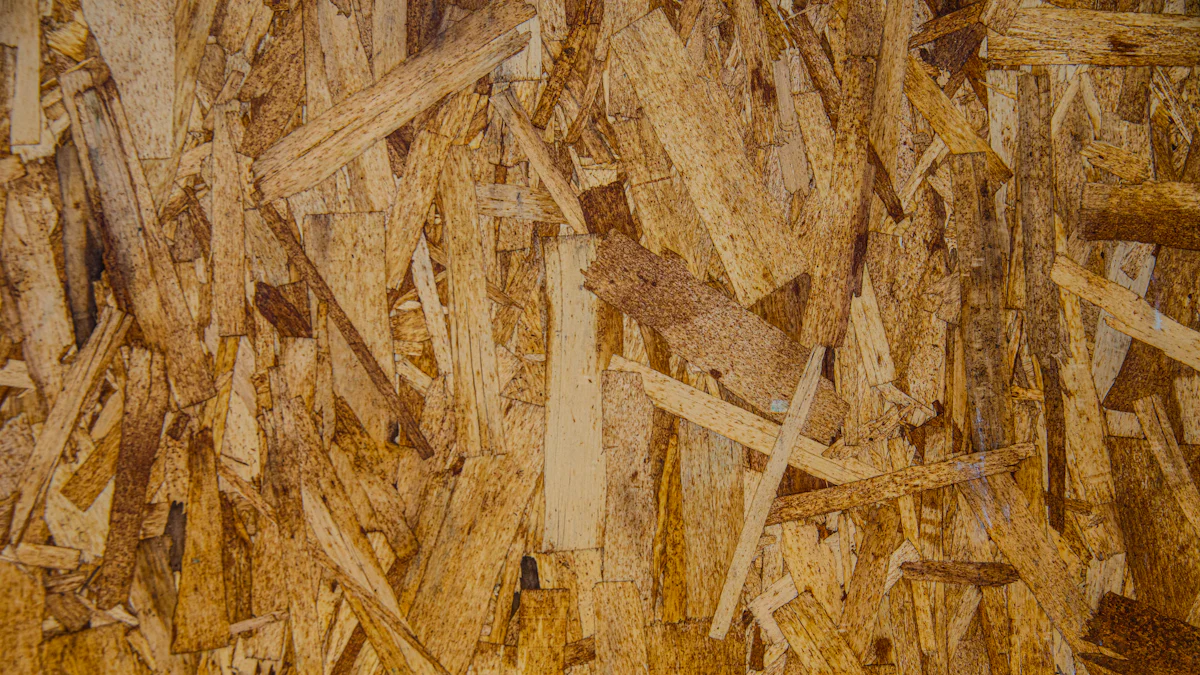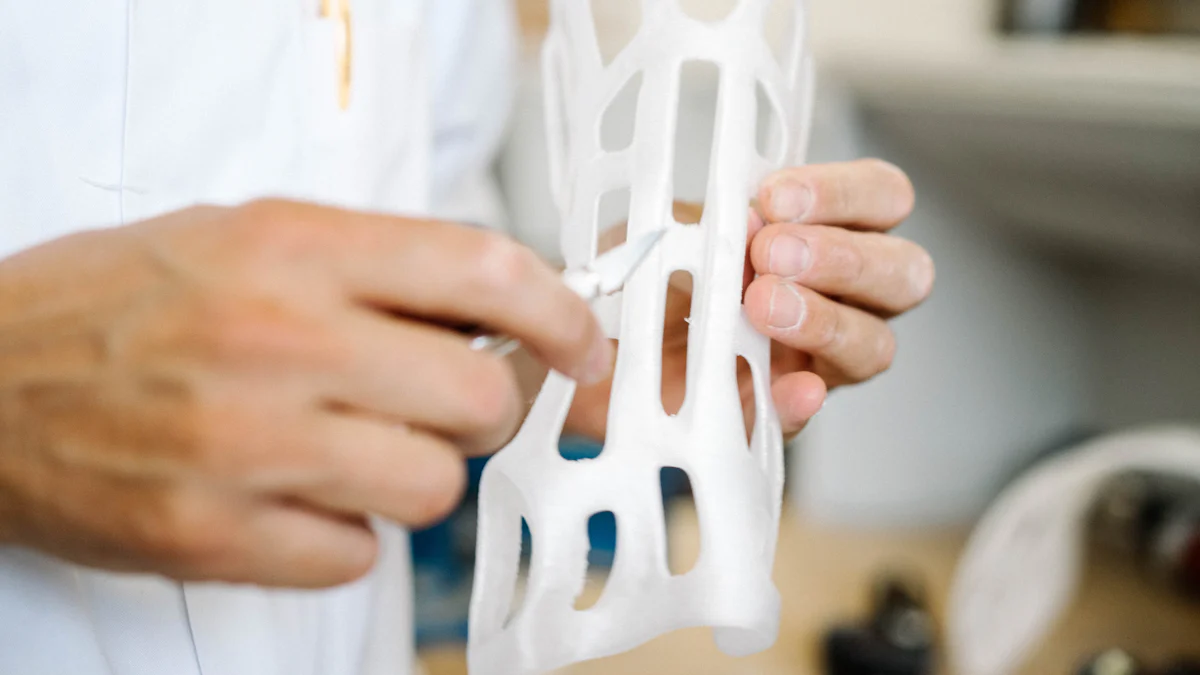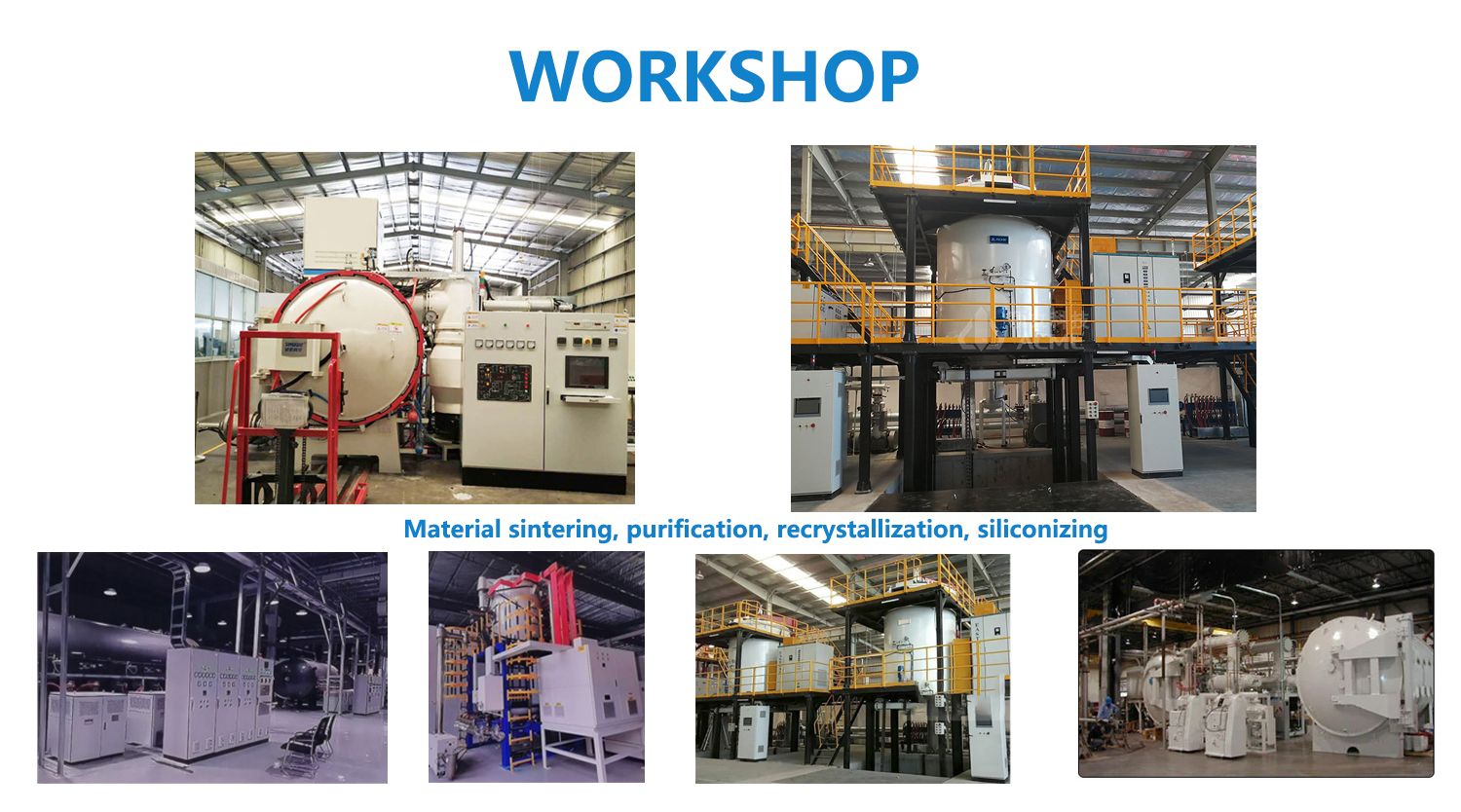
The Graphite three-petal crucible has emerged as a groundbreaking innovation in crystal growth technology. Its advanced design and high-purity graphite composition address critical challenges faced in high-temperature applications. Industries like semiconductors and optics benefit from its exceptional thermal conductivity, chemical resistance, and structural integrity. This crucible ensures uniform heat distribution, minimizes contamination risks, and withstands extreme conditions without compromising performance. By combining durability with precision, the Graphite three-petal crucible sets a new standard for efficiency and reliability in demanding industrial processes.
Key Takeaways
- The innovative three-petal design of graphite crucibles ensures uniform heat distribution, crucial for producing high-quality crystals without defects.
- High-purity graphite material minimizes contamination risks, safeguarding the integrity of crystals during growth, especially in semiconductor applications.
- The advanced CVD SiC coating enhances the crucible's durability and lifespan, making it a cost-effective solution for both industrial and laboratory settings.
- These crucibles excel in high-temperature environments, maintaining structural integrity and performance even under extreme conditions.
- Their adaptability allows for use across various crystal growth processes, supporting both small-scale experiments and large-scale industrial production.
- Industries such as optics, semiconductors, and solar energy significantly benefit from the reliability and efficiency of graphite three-petal crucibles.
- By addressing challenges like thermal stress and contamination, these crucibles set a new standard for excellence in crystal growth technology.
Challenges in Crystal Growth
Contamination Risks
Sources of contamination during crystal growth
Contamination poses a significant challenge in crystal growth processes. Impurities often originate from the materials used in crucibles, environmental factors, or even the tools involved in handling. Traditional crucibles, made from materials prone to chemical reactions, can release unwanted particles into the growing crystal. Additionally, airborne contaminants or residues from previous processes may infiltrate the system, compromising the purity of the crystal.
"Crystallization is preceded by nucleation, which can be induced by vibration or particles," as noted by the MIT Chemistry Department. This highlights how even minor disturbances or foreign particles can initiate unwanted nucleation, leading to defects in the crystal structure.
Impact of impurities on crystal quality
Impurities disrupt the atomic arrangement within crystals, resulting in structural defects. These defects degrade the optical, electrical, and mechanical properties of the material. For industries like semiconductors and optics, such imperfections can render the final product unusable. High-purity materials and contamination-resistant equipment are essential to ensure the integrity of the crystal.
Thermal Stress and Cracking
Causes of thermal stress in traditional crucibles
Thermal stress arises when temperature changes occur unevenly across a crucible. Traditional crucibles, with their limited thermal conductivity, fail to distribute heat uniformly. Rapid heating or cooling amplifies this issue, causing expansion or contraction at different rates. This imbalance generates internal stress, which weakens the crucible over time.
The University of Tokyo's research on crystal growth emphasizes the importance of controlled environments. Stirring solutions or maintaining consistent conditions can prevent abrupt changes that lead to stress. However, traditional crucibles often lack the design features necessary to achieve such control.
How cracking affects crystal uniformity
Cracking in crucibles disrupts the crystal growth process by creating irregularities in temperature and pressure. These inconsistencies hinder the formation of a uniform crystal lattice. As a result, the final crystal may exhibit variations in density, transparency, or conductivity. For applications requiring precision, such as laser optics or microchips, these flaws are unacceptable.
Achieving Uniform Crystal Growth
Importance of temperature distribution
Uniform temperature distribution is critical for growing high-quality crystals. Consistent heat ensures that the crystal grows at a steady rate, avoiding defects caused by uneven expansion or contraction. Slow and controlled growth, as recommended by the MIT Chemistry Department, allows crystals to achieve the size and quality required for diffraction and other advanced applications.
Limitations of conventional crucible designs
Conventional crucibles often fall short in maintaining the precise conditions needed for uniform growth. Their designs lack the ability to evenly distribute heat or resist rapid temperature changes. This limitation results in inconsistent crystal structures, reducing the efficiency and reliability of the final product. Advanced crucible designs, incorporating innovative materials and engineering, are essential to overcome these challenges.
Features of Graphite Three-Petal Crucibles
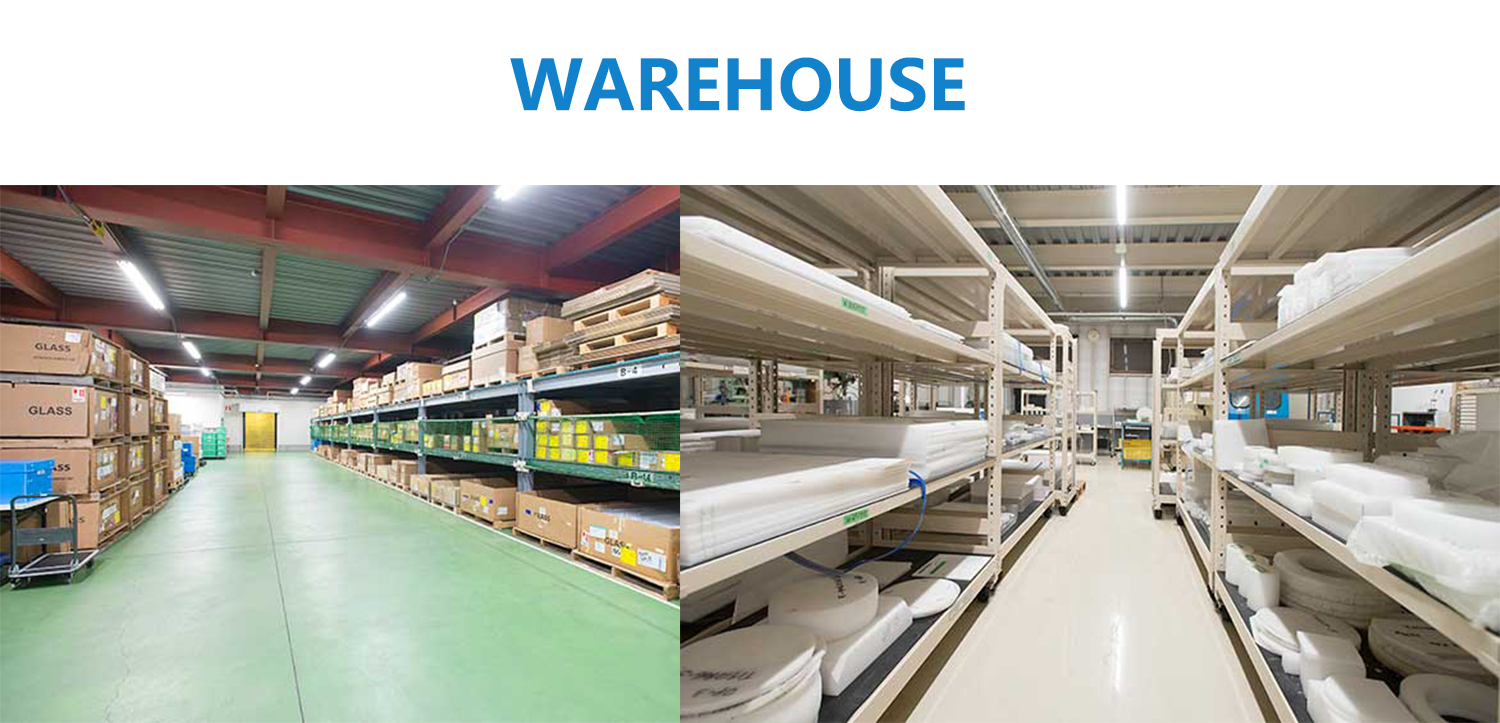
Unique Three-Petal Design
How the design improves thermal distribution
The Graphite three-petal crucible incorporates a distinctive three-petal design that optimizes thermal distribution. This innovative structure ensures even heat transfer across the crucible, eliminating temperature gradients that often lead to defects in crystal growth. By maintaining consistent thermal conditions, the crucible supports the formation of high-quality crystals with uniform properties. Industries requiring precision, such as semiconductors and optics, benefit significantly from this advanced design.
"Uniform heat distribution is critical for achieving defect-free crystals," as highlighted by materials science research. The three-petal configuration addresses this need by enhancing thermal conductivity and stability.
Enhanced structural integrity with a small thermal expansion coefficient
The three-petal design also enhances the structural integrity of the crucible. Its small thermal expansion coefficient allows it to withstand rapid heating and cooling cycles without cracking or deforming. This feature is particularly valuable in high-temperature applications, where traditional crucibles often fail due to thermal stress. The robust structure of the Graphite three-petal crucible ensures durability and reliability, even under extreme conditions.
High-Purity Graphite Material
Resistance to contamination and chemical reactions
The use of high-purity graphite material in the crucible minimizes the risk of contamination during crystal growth. Graphite's chemical inertness prevents unwanted reactions with the materials being processed, ensuring the purity of the final crystal. This resistance to contamination makes the crucible an ideal choice for industries like semiconductor manufacturing, where even trace impurities can compromise product quality.
High-purity graphite crucibles are renowned for their exceptional chemical stability, making them indispensable in high-stakes applications such as advanced metallurgy and electronics.
Durability under high temperatures and harsh conditions
High-purity graphite also exhibits remarkable durability under extreme temperatures and harsh conditions. The material's thermal stability allows it to perform reliably in environments exceeding 1,600°C (2,912°F). Its resistance to thermal shock further enhances its suitability for demanding industrial processes. The Graphite three-petal crucible leverages these properties to deliver consistent performance, even in the most challenging scenarios.
Advanced CVD SiC Coating
Increased durability and lifespan
The crucible's advanced CVD (Chemical Vapor Deposition) SiC coating significantly extends its lifespan. This coating forms a protective layer that enhances the crucible's resistance to wear and tear, ensuring long-term usability. By reducing the frequency of replacements, the coating contributes to cost efficiency and operational continuity in industrial settings.
Enhanced resistance to aggressive chemical environments
The CVD SiC coating also provides superior resistance to aggressive chemical environments. It shields the crucible from corrosive substances, preserving its structural integrity and performance. This feature is particularly beneficial in applications involving reactive materials, where uncoated crucibles may degrade over time. The combination of high-purity graphite and advanced SiC coating makes the Graphite three-petal crucible a reliable solution for complex crystal growth processes.
Customization and Scalability
Adaptability to different crystal growth processes
The Graphite Three-Petal Crucible demonstrates remarkable adaptability across various crystal growth processes. Its innovative design and high-purity graphite composition make it suitable for diverse applications, ranging from semiconductor manufacturing to advanced optics. The crucible's ability to maintain consistent thermal conditions ensures compatibility with techniques such as the Czochralski method, Bridgman process, and vapor-phase growth.
"Graphite crucibles are known for their excellent thermal conductivity and resistance to thermal shock," which makes them ideal for high-temperature applications, as highlighted by materials science research.
This adaptability stems from the crucible's unique combination of thermal stability and chemical resistance. It can handle the precise requirements of different crystal growth environments without compromising performance. Whether used in laboratory experiments or large-scale industrial operations, the crucible delivers consistent results, ensuring high-quality crystal production.
Scalability for industrial and laboratory applications
The Graphite Three-Petal Crucible excels in scalability, making it a versatile solution for both industrial and laboratory settings. Its robust construction and advanced features allow it to meet the demands of high-volume production while maintaining the precision required for research and development. This scalability ensures that the crucible can support a wide range of operational scales, from small experimental setups to full-scale manufacturing lines.
Industrial Applications:
- The crucible's durability under extreme temperatures and harsh conditions makes it indispensable in industries like semiconductors and solar energy.
- Its ability to withstand rapid heating and cooling cycles ensures reliability in high-stakes environments.
Laboratory Applications:
- Researchers benefit from the crucible's chemical inertness and thermal stability, which enable accurate experimentation and innovation.
- Its compatibility with various crystal growth methods supports the exploration of new materials and techniques.
The combination of adaptability and scalability positions the Graphite Three-Petal Crucible as a critical tool for advancing crystal growth technologies. Its ability to perform consistently across different scales and processes underscores its value in both cutting-edge research and large-scale industrial production.
How These Crucibles Address Specific Challenges
Reducing Contamination
Role of high-purity graphite in maintaining crystal integrity
High-purity graphite plays a pivotal role in preserving the integrity of crystals during growth. Its chemical inertness prevents unwanted interactions with the materials being processed. Unlike traditional crucibles, which may introduce impurities through chemical reactions, the Graphite three-petal crucible ensures a contamination-free environment. This feature is critical for industries like semiconductors, where even trace impurities can compromise the performance of end products.
"Graphite crucibles are known for their exceptional chemical stability," as noted in materials science research. This stability makes them indispensable in applications requiring high-purity outcomes.
By maintaining a pristine environment, the crucible supports the formation of defect-free crystals. This advantage directly translates to improved product quality and reliability in demanding industrial applications.
Prevention of chemical reactions with the crucible material
The Graphite three-petal crucible eliminates the risk of chemical reactions between the crucible material and the substances involved in crystal growth. Graphite's resistance to corrosion and reactivity ensures that no foreign particles or compounds interfere with the process. This property sets it apart from ceramic crucibles, which are more prone to degradation under harsh conditions.
The crucible's advanced design and material composition create a stable environment for crystal growth. This stability enhances the purity and structural integrity of the final product, meeting the stringent requirements of industries like optics and electronics.
Minimizing Thermal Stress
Improved heat distribution through the three-petal design
The innovative three-petal design of the crucible optimizes heat distribution. This unique structure ensures that thermal energy spreads evenly across the crucible's surface, eliminating temperature gradients. Uneven heating, a common issue in traditional crucibles, often leads to thermal stress and defects. The Graphite three-petal crucible addresses this challenge by maintaining consistent thermal conditions.
"Graphite crucibles have superior thermal conductivity," which reduces smelting times and energy consumption. This property also minimizes the risk of thermal stress during rapid heating or cooling cycles.
By improving heat distribution, the crucible supports the growth of high-quality crystals with uniform properties. This feature is particularly valuable in applications requiring precision, such as semiconductor manufacturing.
Reduction in cracking and defects
Thermal stress often causes cracking in conventional crucibles, leading to defects in the crystal growth process. The Graphite three-petal crucible mitigates this issue through its small thermal expansion coefficient. This characteristic allows the crucible to withstand rapid temperature changes without compromising its structural integrity.
Cracking disrupts the uniformity of temperature and pressure, which are essential for crystal growth. By preventing such disruptions, the crucible ensures a smooth and consistent process. This advantage results in higher yields and fewer defects, making it a reliable choice for industrial and research applications.
Enhancing Crystal Uniformity
Consistent temperature control for uniform growth
Uniform crystal growth depends on precise temperature control. The Graphite three-petal crucible excels in maintaining consistent thermal conditions, ensuring that crystals grow at a steady rate. This consistency prevents defects caused by uneven expansion or contraction, which are common in traditional crucibles.
"Uniform heat distribution is critical for achieving defect-free crystals," as highlighted by materials science research. The crucible's design and material properties address this need effectively.
By providing consistent temperature control, the crucible supports the production of high-quality crystals. This feature is essential for industries like optics, where uniformity directly impacts performance.
Improved yield and quality of crystals
The advanced features of the Graphite three-petal crucible contribute to improved yields and crystal quality. Its ability to maintain a stable environment minimizes defects, resulting in higher-quality outcomes. This reliability reduces waste and enhances efficiency, making the crucible a cost-effective solution for large-scale operations.
Industries requiring precision and consistency benefit significantly from these improvements. The crucible's performance ensures that manufacturers can meet the growing demand for high-quality crystals in sectors like semiconductors, optics, and photonics.
Real-World Applications and Benefits
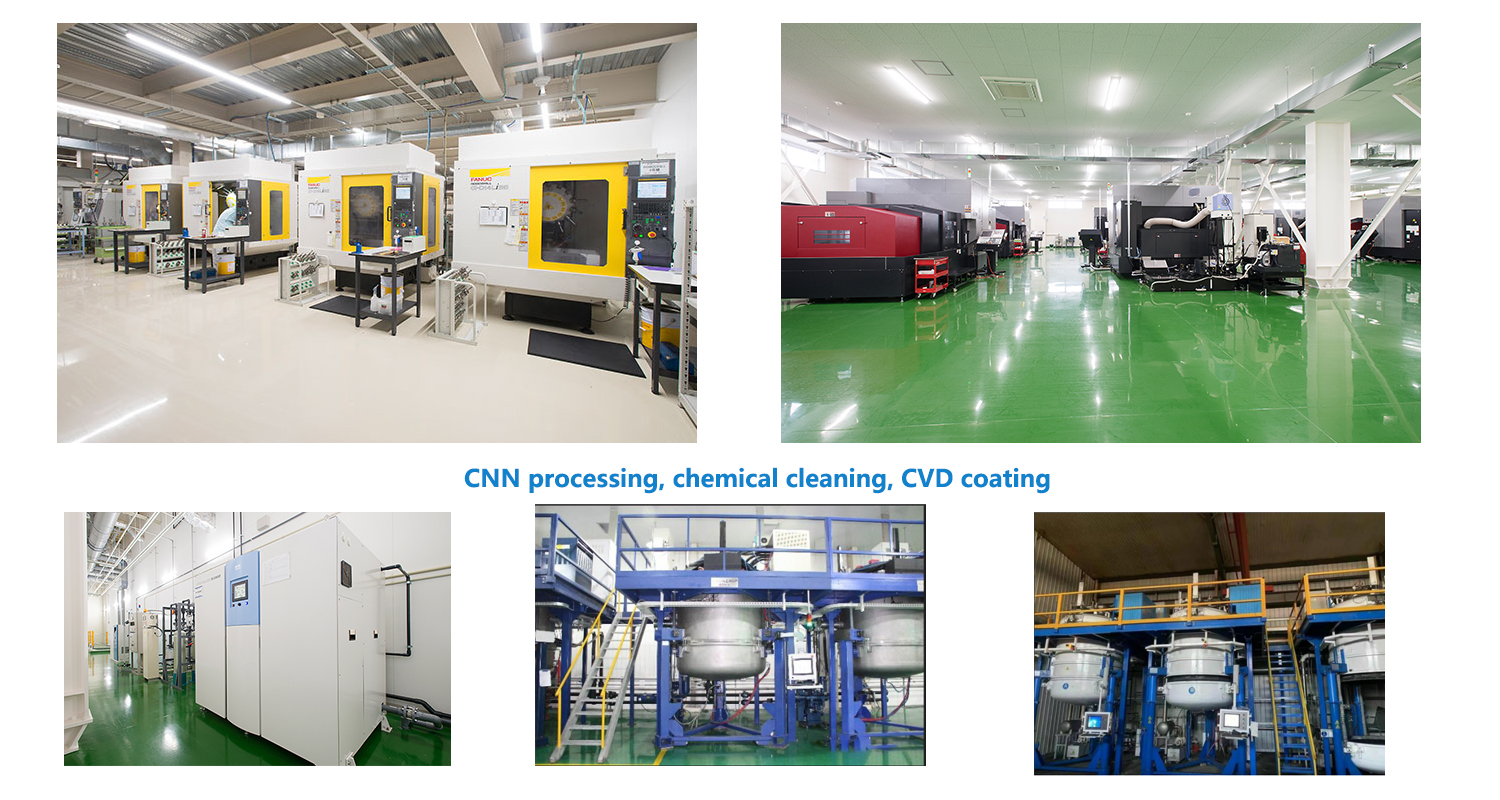
Semiconductor Industry
Role in producing high-quality silicon wafers
The Graphite Three-Petal Crucible plays a pivotal role in the production of high-quality silicon wafers. Silicon wafers serve as the foundation for semiconductor devices, requiring exceptional purity and uniformity. The crucible's high-purity graphite material ensures a contamination-free environment during the crystal growth process. Its advanced thermal conductivity supports precise temperature control, which is critical for achieving defect-free silicon crystals.
"High-purity graphite crucibles are essential in processes that require materials to withstand extremely high temperatures while maintaining structural integrity," as highlighted by DataIntelo. This makes them indispensable in semiconductor manufacturing.
By delivering consistent performance under extreme conditions, the crucible enhances the quality and reliability of silicon wafers. This improvement directly impacts the efficiency of semiconductor devices used in modern electronics.
Meeting the demand for advanced electronics
The growing demand for advanced electronics has intensified the need for high-performance materials. The Graphite Three-Petal Crucible addresses this challenge by enabling the production of superior-quality crystals. Its durability and resistance to thermal shock ensure uninterrupted operations, even in high-stakes environments.
The semiconductor industry relies on these crucibles to meet the stringent requirements of next-generation technologies. From smartphones to electric vehicles, the crucible's contribution to silicon wafer production supports the development of cutting-edge electronic devices.
Optics and Photonics
Growth of defect-free optical crystals
Optical crystals require exceptional clarity and uniformity to perform effectively in applications like lasers and imaging systems. The Graphite Three-Petal Crucible facilitates the growth of defect-free optical crystals by maintaining consistent thermal conditions. Its unique three-petal design ensures even heat distribution, preventing irregularities that could compromise the crystal's optical properties.
According to Markwide Research, "Graphite crucibles offer superior thermal conductivity, chemical resistance, and durability, making them highly preferred in industrial applications." These qualities are crucial for producing high-quality optical crystals.
The crucible's chemical inertness further ensures that no impurities interfere with the crystal growth process. This advantage makes it a reliable choice for industries requiring precision and consistency.
Applications in lasers and imaging systems
Defect-free optical crystals produced using the Graphite Three-Petal Crucible find applications in advanced lasers and imaging systems. These systems demand materials with high transparency and minimal imperfections. The crucible's ability to deliver consistent results supports the development of technologies used in medical imaging, telecommunications, and scientific research.
By enabling the production of high-performance optical components, the crucible contributes to advancements in photonics and optics. Its role in these industries underscores its value as a critical tool for innovation.
Research and Development
Supporting innovation in materials science
The Graphite Three-Petal Crucible serves as an essential resource for researchers exploring new materials and techniques. Its adaptability to various crystal growth processes allows scientists to experiment with innovative methods. The crucible's high-purity graphite composition ensures accurate results, making it a trusted tool in materials science.
"There is a growing emphasis on the development of high-performance graphite crucibles with improved durability, thermal conductivity, and thermal shock resistance," as noted by Custom Market Insights. These advancements align with the needs of research and development.
By providing a stable and reliable environment, the crucible supports groundbreaking discoveries in materials science. Its contribution to research accelerates the development of next-generation technologies.
Enabling experimental crystal growth techniques
Experimental crystal growth techniques often require precise control over temperature and environmental conditions. The Graphite Three-Petal Crucible excels in meeting these requirements. Its advanced design and material properties enable researchers to explore new methods with confidence.
The crucible's versatility makes it suitable for a wide range of experimental setups. From small-scale laboratory experiments to pilot production runs, it delivers consistent performance. This reliability empowers researchers to push the boundaries of crystal growth technology, paving the way for future innovations.
Broader Industrial Applications
Use in solar energy, aerospace, and nuclear sectors
The Graphite Three-Petal Crucible demonstrates exceptional versatility across diverse industrial sectors. Its ability to withstand extreme temperatures and maintain structural integrity makes it indispensable in solar energy applications. During the production of photovoltaic cells, the crucible ensures a contamination-free environment, enabling the growth of high-purity silicon crystals essential for efficient solar panels.
In aerospace, the crucible supports the development of advanced materials used in high-performance components. Its superior thermal conductivity and resistance to thermal shock allow it to endure the rigorous conditions of aerospace manufacturing processes. These qualities ensure the reliability and durability of materials critical for aircraft and spacecraft.
The nuclear sector also benefits significantly from the crucible's advanced properties. High-purity graphite's chemical stability and resistance to radiation make it a preferred choice for producing materials used in nuclear reactors. The crucible's ability to maintain consistent performance under harsh conditions ensures the safety and efficiency of nuclear operations.
"Graphite crucibles offer superior thermal conductivity, chemical resistance, and durability, making them highly preferred in industrial applications," as highlighted by Markwide Research. These attributes position the crucible as a vital tool in industries requiring precision and resilience.
Contribution to high-density, high-purity, and high-strength materials
The Graphite Three-Petal Crucible plays a pivotal role in the production of high-density, high-purity, and high-strength materials. Its innovative design and high-purity graphite composition enable the creation of materials with exceptional mechanical and thermal properties. These materials are essential for industries that demand superior performance and reliability.
In metallurgy, the crucible facilitates the production of alloys and superalloys with enhanced strength and durability. Its resistance to chemical reactions ensures the purity of the final product, meeting the stringent requirements of modern industrial processes.
Chemical processing also relies on the crucible's advanced features. Its ability to resist corrosion and maintain stability under extreme conditions supports the synthesis of high-purity chemicals and compounds. This capability is critical for applications in pharmaceuticals, electronics, and other high-tech industries.
According to Custom Market Insights, "There is a growing emphasis on the development of high-performance graphite crucibles with improved durability, thermal conductivity, and thermal shock resistance." These advancements align with the increasing demand for materials that can withstand the challenges of contemporary industrial applications.
By contributing to the production of high-quality materials, the Graphite Three-Petal Crucible enhances the efficiency and reliability of processes across multiple sectors. Its role in advancing material science underscores its value as a cornerstone of modern industry.
Semicera's Graphite Three-Petal Crucible redefines crystal growth by addressing contamination, thermal stress, and uniformity challenges with precision. Its innovative three-petal structure ensures optimal heat distribution, while high-purity graphite minimizes impurities, safeguarding crystal integrity. The advanced CVD SiC coating enhances durability, enabling the crucible to perform reliably under extreme conditions. These features empower industries like semiconductors and optics to achieve superior-quality outcomes. By combining efficiency with reliability, this crucible elevates manufacturing processes, setting a new benchmark for excellence in crystal growth technology.
FAQ
What makes graphite three-petal crucibles unique compared to traditional crucibles?
Graphite three-petal crucibles stand out due to their innovative design and material composition. The three-petal structure ensures even heat distribution, reducing thermal stress and preventing defects during crystal growth. High-purity graphite material minimizes contamination risks, while the advanced CVD SiC coating enhances durability and resistance to harsh chemical environments. These features make them superior to conventional crucibles in terms of performance and reliability.
Can graphite three-petal crucibles withstand extreme temperatures?
Yes, graphite three-petal crucibles excel in high-temperature environments. Their high-purity graphite material offers exceptional thermal stability, allowing them to perform reliably at temperatures exceeding 1,600°C (2,912°F). The small thermal expansion coefficient ensures structural integrity during rapid heating and cooling cycles, making them ideal for demanding industrial applications.
Why are graphite crucibles preferred for melting metals?
Graphite crucibles are highly valued in metal casting processes due to their excellent thermal conductivity, high melting point, and chemical resistance. These properties enable efficient heat transfer and prevent reactions with molten metals. Additionally, their durability and resistance to thermal shock make them a reliable choice for foundries and other metalworking industries.
"Graphite crucibles are the best for melting precious metals and other types of metals due to their good thermal stability, resistance to shock, acidity, high temperatures, and long-lasting nature," as noted in materials science research.
How do graphite three-petal crucibles improve crystal growth?
The unique three-petal design ensures uniform heat distribution, which is critical for growing high-quality crystals. Consistent thermal conditions prevent defects caused by uneven expansion or contraction. High-purity graphite material eliminates contamination risks, ensuring the integrity of the crystal. These features collectively enhance the yield and quality of crystals, meeting the stringent requirements of industries like semiconductors and optics.
Are graphite three-petal crucibles suitable for laboratory use?
Yes, graphite three-petal crucibles are highly adaptable for laboratory applications. Their chemical inertness and thermal stability make them ideal for experimental crystal growth techniques. Researchers benefit from their compatibility with various methods, such as the Czochralski process and Bridgman method. The crucibles' precision and reliability support innovation in materials science and other research fields.
What industries benefit most from graphite three-petal crucibles?
Industries such as semiconductors, optics, solar energy, aerospace, and nuclear sectors benefit significantly from graphite three-petal crucibles. In semiconductor manufacturing, they enable the production of high-quality silicon wafers. Optics and photonics rely on these crucibles for defect-free optical crystals. Their versatility also supports applications in photovoltaic cell production, advanced metallurgy, and nuclear reactor materials.
How does the CVD SiC coating enhance the crucible's performance?
The advanced CVD SiC coating forms a protective layer on the crucible, increasing its durability and lifespan. This coating resists wear and tear, reducing the frequency of replacements. It also provides superior resistance to aggressive chemical environments, preserving the crucible's structural integrity and ensuring consistent performance in challenging conditions.
Are graphite three-petal crucibles cost-effective?
Yes, graphite three-petal crucibles offer long-term cost efficiency. Their durability and resistance to thermal shock reduce the need for frequent replacements. The ability to maintain consistent performance under extreme conditions minimizes operational disruptions, enhancing productivity. These factors make them a valuable investment for both industrial and laboratory applications.
Can these crucibles be customized for specific applications?
Graphite three-petal crucibles can be tailored to meet the unique requirements of different crystal growth processes. Their adaptability allows them to support various techniques and operational scales, from small-scale laboratory experiments to large-scale industrial production. This customization ensures optimal performance across diverse applications.
What role do graphite crucibles play in advancing modern technologies?
Graphite crucibles contribute significantly to the development of advanced technologies. Their use in producing high-purity, high-strength materials supports innovations in semiconductors, optics, solar energy, and aerospace. By enabling the growth of defect-free crystals and high-performance materials, these crucibles drive progress in industries that rely on precision and reliability.
